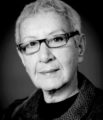“Trauma of Peace” is a yet-unpublished anthology of my writing over the past few decades.
The first chapter, “Reflections on Israeli Society”, begins with my diagnosis of Israeli society, or, more particularly, of the Zionist Israeli Collective. It addresses the fundamental pathologies that crowd the horizon of the Zionist Israeli Collective, the complex interplay between victimhood, violence and strength that are foundational to understanding the coordinates in which the Israeli mind strikes out its political course. Much of this, of course, has been treated elsewhere. But this effort is dedicated mainly to thinking about what accounts for the gap between Israel’s self-perception and its real self, which is becoming more and more pronounced.
The opening tract, written in 2013, is followed by speeches and articles reprinted here from 1990 onwards. These are: “Where should the borderline be? (1990); “A profile of the Israeli-Zionist Society” (1992); “A View from Within: Problems Confronting Human Rights Organizations in Israel and the Occupied Territories” (2000); “Everyday life in continuous Crisis: The Psycho-Political Impact of the Imbalance between Responsibility and Power in the Israel-Palestinian Conflict (2001); “Untitled Speech in the New School” (2002); “Psychological Impact of the Intifada on Israeli Society” (2003); “Within the Game, Outside and Against it: Physicians for Human Rights Israel and its struggle against the Occupation” (2004); “Transparent Wall, Opaque Gates” (2005) and “Denial and Forced Existence” (2006). Brought together, they provide a comprehensive account not only of my own evolving thought and engagement in the Israeli-Palestinian conflict since, roughly, the first intifada, but also are a prolonged analysis to in the psychological underpinnings of a collectivity riveted by conflict and violence for decades.
The second chapter, “Health”, turns to analyze the Israeli occupation through the prism of healthcare. What I find there is that the Palestinian Authority, newly established by the Oslo peace accords, continued organizational patterns established during the Israeli occupation but effectively unburdened the State of Israel from the material and international burden of occupation in return for granting the PLO illusory power. Israeli doctors, lead by the Israeli Medial Association, serve the military and political establishment of Israel in its refurbished, leaner, post-Oslo occupation, while Palestinian medical professionals are brutalized by the Israeli authorities. The question of access to healthcare is politicized here in several ways, and not only through the straightforward index of ‘who has access and who does not’. As medical professionals, PHR-IL’s activities attempt to provide essential access to Palestinians in the occupied territories and aid the dilapidated health-care system the P.A. has inherited from the Israeli occupation forces. And yet, as I argue in the final piece in the chapter, nonpolitical humanitarian aid, i.e. the provision of healthcare without addressing, much less commenting on, the political situation in which it is extended for fear of jeopardizing PHR-IL’s position in the Israeli mainstream, is a betrayal of the ethical foundations of the Hippocratic oath, which binds all physicians and medical professionals and defines their role in society.
As in the first chapter, the introductory tract I wrote in 2013 is followed by separate pieces appearing in chronological order: “The White Robe as a Barrier” (1990); “The politics of Health Care in the Occupied Territories, 1967-1997” (1999); “Public Health as a Problem of Freedom of Movement: The Imbalance of Power and Responsibility” (2002); “Human Rights and Psychiatry in Violent Political Conflict” (2005); “Restrictions of Freedom of Movement for Medical Staff and Students in the Occupied Palestinian Territory: Undermining Healthcare in East Jerusalem, The West Bank and Gaza Strip” (2011); “Human Rights Violations During Israel’s Attach on the Gaza Strip: December 27, 2008 to January 19, 2009” (2011); “Working Together in Solidarity: Advancement of Public Health and Human Rights in Israel and the OPT” (2011); “Health Care and the Palestinian Bid for Statehood” (2011) and “Non-Political Humanitarian Aid Betrays the Hippocratic Oath” (2012).
The third chapter, "Women", explores the connection between gender discrimination, human rights abuses, and social justice. Although Israel/Palestine does not have its own Leymah Gbowee, much of the elements she brought together to such great effect in Liberia exist here, too. The chapter relates to my own experiences as a medical student in the 1950's, and how gender discrimination helped form my politics, my activities, my commitments and therefore my life. To myself and to many others, the feminist perspective has been a determining factor in shaping notions of solidarity, political engagement, but more fundamentally, what health means and what human rights are.
This chapter is significantly shorter than both its predecessors, comprised of four articles reprinted here: my untitled contribution to the UN's international NGO meeting on the Question of Palestine (1990); "Conflict Experiences: The many Faces of Violence and of Resilience" (2010); "Acceptance Speech for Right Livelihood Award" (2010) and "Women's health from a Human Rights Perspective (2011), which I co-authored with volunteer Tess Deegan.
Section 4 – “INSIDE ISRAELI JAILS” / “FIGHTING TORTURE: THE LONG WAY FROM DENIAL TO OUTLAWING”
Section 5 – “PEACE” / “The Trauma of Peace”
Section 6 – “Words to the Wise: Speeches to Physicians for Human Rights-Israel”
